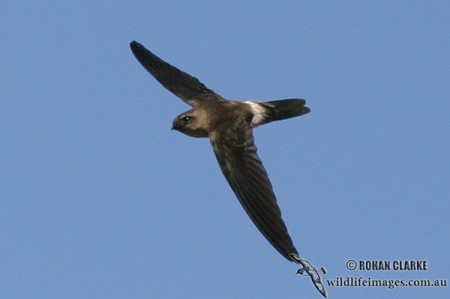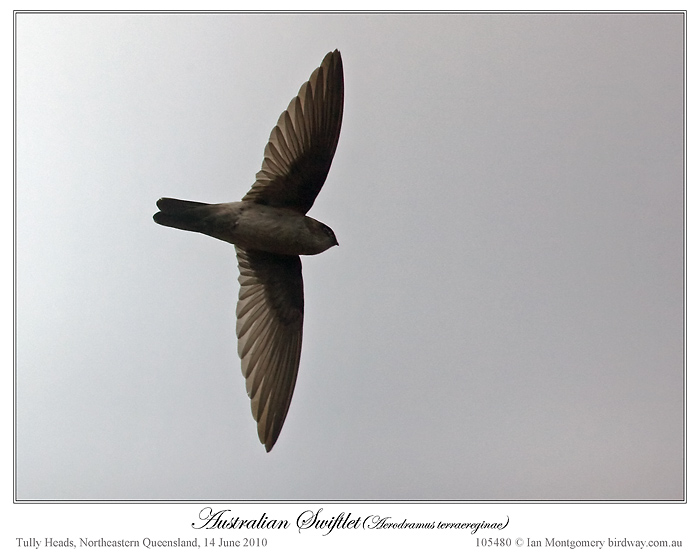
Aerodramus spodiopygius
SUBFAMILY
Chaeturinae
TAXONOMY
Macropteryx spodiopygius Peale, 1848, Samoa Islands. Eleven
subspecies.
OTHER COMMON NAMES
Gray swiftlet, Pacific white-rumped swiftlet; French: Salangane
а croupion blanc; German: WeiЯbьrzelsalangane; Spanish:
Salangana Culiblanca.
PHYSICAL CHARACTERISTICS
3.3–4.4 in (10–11.5 cm); 0.3 oz (8.2 g). A highly polytypic
species. All have a pale rump, but the degree of paleness varies
geographically.
DISTRIBUTION
Extensive range on oceanic islands in Papuasia, Melanesia, and
Polynesia from island groups off New Guinea eastward to New
Caledonia, Fiji, Tonga, and Samoa; New Zealand.
HABITAT
Island-inhabiting species occurring widely. Generally found in
lowlands but sometimes to 5,250–5,900 ft (1,600–1,800 m) on
larger islands.
BEHAVIOR
Feeds in association with other swiftlets and swallows: utilizes
echolocation to access nest sites.
FEEDING ECOLOGY AND DIET
Wide array of insects, including aerial insects and spiders.
REPRODUCTIVE BIOLOGY
Nest is of fine plant material and mosses held together with
salivary cement and attached to the wall of a cave. Clutch size
is one or two eggs. Incubation period is 22–25 days; fledging
period is 45–46 days. Lost eggs and sometimes lost broods are
usually replaced in 9–14 days.
CONSERVATION STATUS
A high fledging success rate suggests stable populations.
SIGNIFICANCE TO HUMANS
None known.
Other popular Animals
Photo Gallery of - White-rumped swiftlet




 Animalia Life
Animalia Life